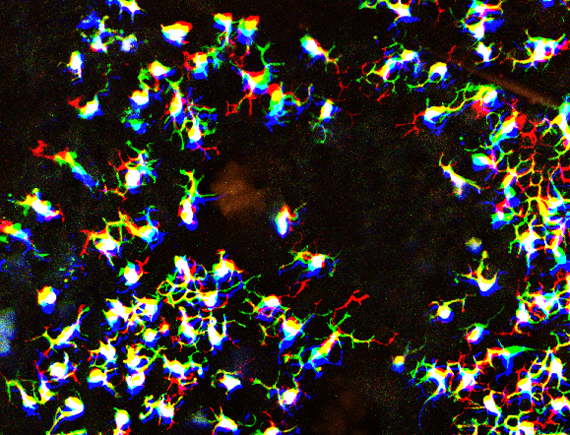T lymphocytes scan the surface of dendritic cells for the presence of foreign antigenic peptides bound to major histocompatibility complex (MHC) molecules. To carry out this daunting task, they use a receptor known as the T cell antigen receptor. The primary objective of our team is to elucidate the molecular basis of T cell antigen recognition and of its ensuing conversion into intracellular signals that are at the basis of adaptive immune responses.
We also pursued studies aiming at disentangling the complexity of the dendritic cell networks that are present in lymphoid and nonlymphoid tissues.
Overview
Our laboratory studies T lymphocytes and dendritic cells (DCs) since they are at the basis of adaptive immunity. In the case of T cells, we pursue the genetic dissection of the architecture of the signaling cassette operated by the T cell receptor (TCR).
We showed that partial-loss-of-function mutations affecting the gene coding for the LAT adaptor result in stereotyped and devastating lymphoproliferative disorders with excessive production of T helper type 2 (Th2) cytokines. The extreme vulnerability of LAT likely results from the fact that it constitutes a highly connected signaling hub of the TCR signaling cassette exerting both positive and negative regulatory functions that are mandatory for proper T cell homeostasy.
Our objective is to elucidate the mechanisms through which during physiological, antigen-driven T cell responses LAT leads first to activation of intracellular effectors involved in cell metabolism, cell division, cell motility, cell survival and differentiation into effectors T cells and then exerts with a temporal delay a feedback inhibition that leads to rapid attenuation of the TCR signaling pathway.
Our studies have a multidisciplinary character and rely on several approaches involving the development of novel mouse models, the identification of modifier genes via ENU mutagenesis and proteomic studies of the LAT signalosome.
Based on our ongoing studies, it appears that certain pathological conditions collectively called « autoimmune » on the basis of the presence of autoantibodies do not result from the presence of self-reactive T cells – as generally thought - but from defect in the cell-intrinsic mechanisms that normally keep in check physiologic T cell responses.

Dynamics of Langerhans Cells in response to stress (3D confoncal microscopy analysis). Copyright J Davoust, S Henri, M and B Malissen, CIML
In parallel, we have pursued studies aiming at disentangling the complexity of the DC networks that are present in lymphoid and non-lymphoid tissues. We will take advantage of our ability to identify homogeneous DC subsets to develop comparative transcriptomic analysis with the team of M. Dalod. Such approach is expected to provide hints on the functional specialization of those various DC subsets and to identify genes that can be subsequently manipulated to develop mice allowing the ablation of such subsets in vivo.